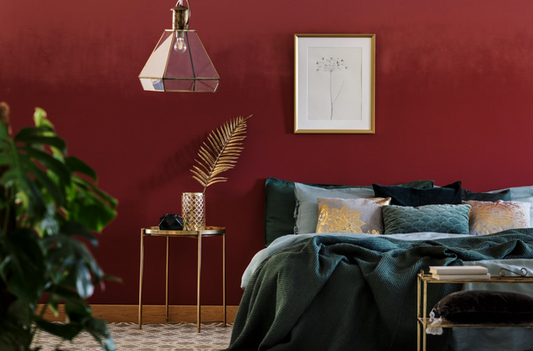Recently, a business expert asked an intriguing question:
Is it better to fit in or stand out? That question has vexed all of us at one time or another, from teenagers to aspiring executives to sociologists. The answer, according to Stanford Graduate School of Business professor Amir Goldberg: It depends.
It depends. Though it doesn't sound particularly helpful, it's very true, both from the standpoints of sociology and interior design. When your new hidden door from Murphy Door is designed, it will be made to match its environment, down to the specific stain applied to the wood. However, how you choose the right surface finish for your door will depend largely on whether you want a hidden door that blends in or stands out.
Choosing the Right Surface Finish for Your Hidden Door
From the very beginning, this decision-making process will take into account both style and substance.
Style
When choosing the right surface finish for your new hidden door, you'll first want to consider your home's overall style. What's the primary color scheme, and how will your door fit into that overall look? Do you intend it to blend in or to provide a contrasting pop?
According to our friends at The Spruce, there's a definite rhyme and reason to this approach, one that takes all factors into consideration.
Do consider the existing colors in your room before adding more color. All the colors in a room are not apparent at first glance. You can walk into an empty room and not realize that there is already color in there that will affect future color plans. This can include flooring, cabinets, ceilings, counters, and even the colors coming in from the windows. Many color schemes have been derailed by the lush green landscape outside, turning everything green when the drapes were opened.
The style of the room itself is an essential factor, but so is the substance of the wood itself.
Substance
When choosing the right surface finish for wooden hidden doors, you must take the wood type into consideration.
Here are a few examples:
- Walnut, with its deep grain patterns, looks great with a dark finish.
- Hickory is a hardwood that tends not to darken with age. A light, glassy finish makes the most of this asset and adds a touch of class.
- Oak can withstand a wonderfully dark stain and is capable of looking deep and dramatic after treatment.
- Maple carries an intrinsically light hue that can either be cooperated with or exploited to dramatic effect.
These are simply a few examples of how basic staining can affect the look and feel of your new hidden door. They are not meant to serve as a guide book but as a jumping-off point.
Personal Taste
In the end, choosing the right surface finish for your hidden door is about combining questions of style and substance with your own personal preferences. This is your home. You will spend large amounts of time here. The point isn't to make it look like someone else's idea of a dream home in a magazine ad but to make you as comfortable as possible.
As you prepare to install your new hidden door from Murphy Door, we want to help ensure that everything about it will only add to your overall enjoyment. Don't let details like colors and staining become a point of stress. Instead, let us help.
We Can Help You Enjoy the Right Surface Finish for Your Hidden Door
Here at The Murphy Door, Inc., we believe every home should be given the chance to be your dream home. Part of making that dream a reality is bringing our expertise to bear on each and every project, right down to the smallest details. That includes choosing the right surface finish to make your hidden door the perfect fit. We also understand that life does happen, we offer stain pens for when life does happen! Contact us today to get started.





